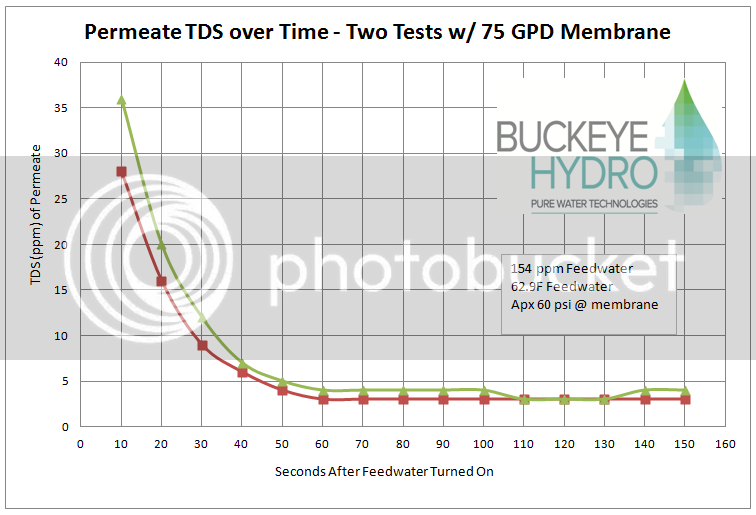THESOUNDBARRIER
Member
- Joined
- May 25, 2013
- Messages
- 24
- Reaction score
- 3
My tap water is not so good. It does not make good beer. I have a TDS meter, and it reads water from the tap as 565 ppm. That is really quite terrible. The water is loaded with bicarbonates and sodium, etc... It's really nasty stuff.
To deal with this, I purchased a pretty cool counter-top RO system that hooks up to my kitchen sink faucet. I bought a digital scale, so I can accurately get my ion levels squared away for different styles of beer with different elements. I found Bru'n Water and chose to use that program to help me out with this. More on that in a sec...
My initial reading after firing up the system came in at 036 ppm, which really shocked me. I got that reading after flushing the RO membrane for about 15 minutes. I thought that was a fantastic ppm level, considering how high my tap water clocks in. However, when I was on break at work today I fired up HomeBrewTalk and learned that anything above 025 ppm is not considered true RO water (according to Martin) - so this bummed me out pretty bad. I've been drinking the water for the past few days and have been loving it. I had to test my water again when I got home, just to be sure.
When I checked the TDS level this time, it came in at 018 ppm. Wow. So I do have RO water! I suppose it's possible that the RO membrane needed more than 15 minutes of run time to give me an accurate reading on my TDS meter.
I'm going to be Brewing NB's Surly Bender clone with custom water. I selected the balanced brown ale profile in Bru'n water, tinkered with the water adjustment calculator, and was able to get everything adjusted pretty much bang on. All my ppm levels look dead nuts accurate with what the desired water profile suggests and the program predicts a mash pH of 5.2. I think I did it right, but this is my first time using Bru'n Water, so I'm not 100% on this.
I'm going to try to attach two files so you homebrewers who know how to use this can check on me, if you want. Cheers.


To deal with this, I purchased a pretty cool counter-top RO system that hooks up to my kitchen sink faucet. I bought a digital scale, so I can accurately get my ion levels squared away for different styles of beer with different elements. I found Bru'n Water and chose to use that program to help me out with this. More on that in a sec...
My initial reading after firing up the system came in at 036 ppm, which really shocked me. I got that reading after flushing the RO membrane for about 15 minutes. I thought that was a fantastic ppm level, considering how high my tap water clocks in. However, when I was on break at work today I fired up HomeBrewTalk and learned that anything above 025 ppm is not considered true RO water (according to Martin) - so this bummed me out pretty bad. I've been drinking the water for the past few days and have been loving it. I had to test my water again when I got home, just to be sure.
When I checked the TDS level this time, it came in at 018 ppm. Wow. So I do have RO water! I suppose it's possible that the RO membrane needed more than 15 minutes of run time to give me an accurate reading on my TDS meter.
I'm going to be Brewing NB's Surly Bender clone with custom water. I selected the balanced brown ale profile in Bru'n water, tinkered with the water adjustment calculator, and was able to get everything adjusted pretty much bang on. All my ppm levels look dead nuts accurate with what the desired water profile suggests and the program predicts a mash pH of 5.2. I think I did it right, but this is my first time using Bru'n Water, so I'm not 100% on this.
I'm going to try to attach two files so you homebrewers who know how to use this can check on me, if you want. Cheers.





